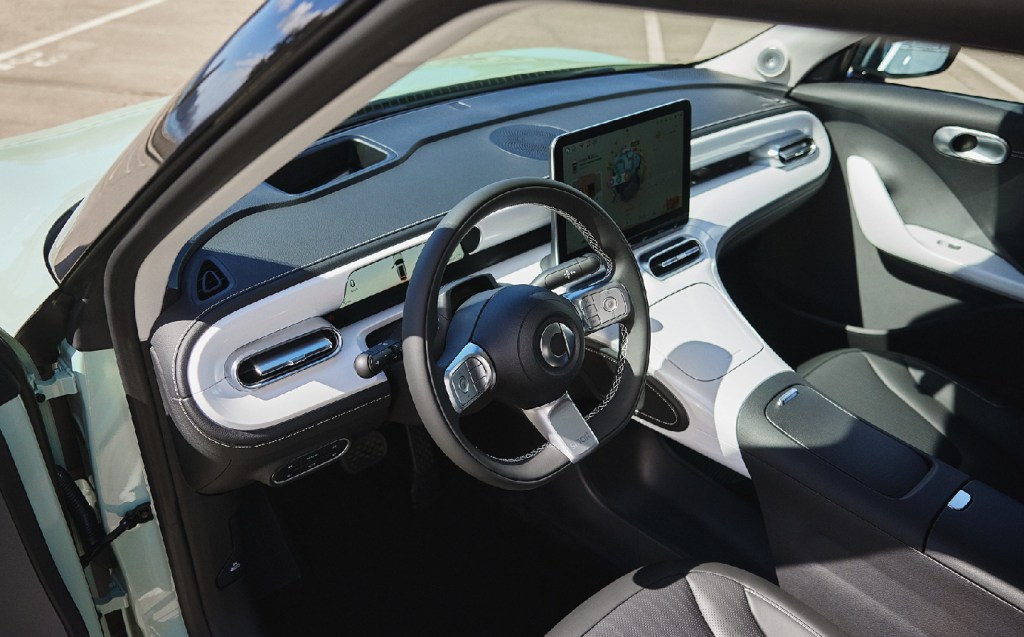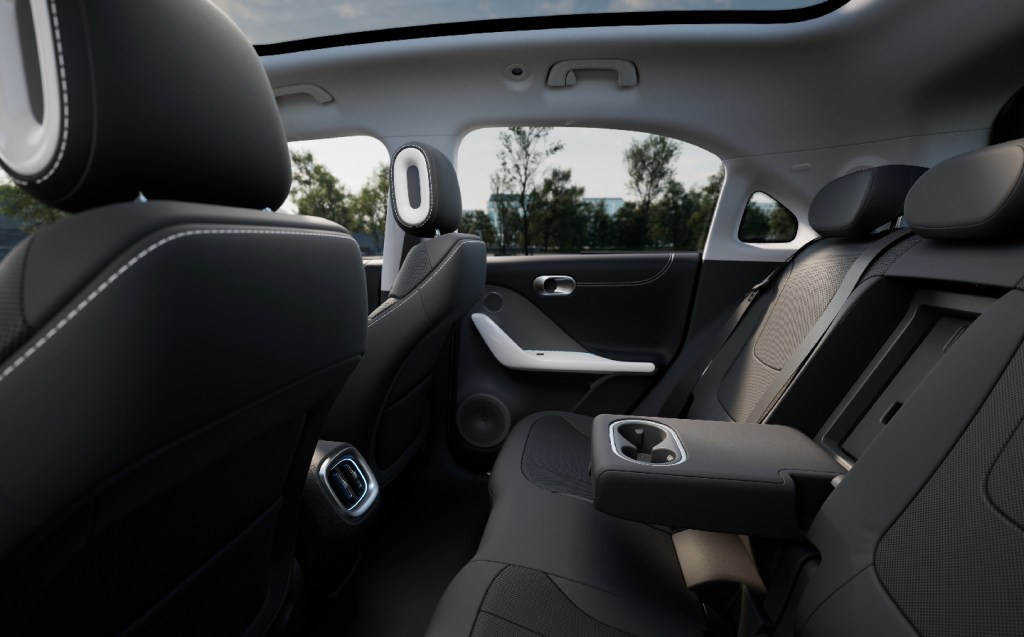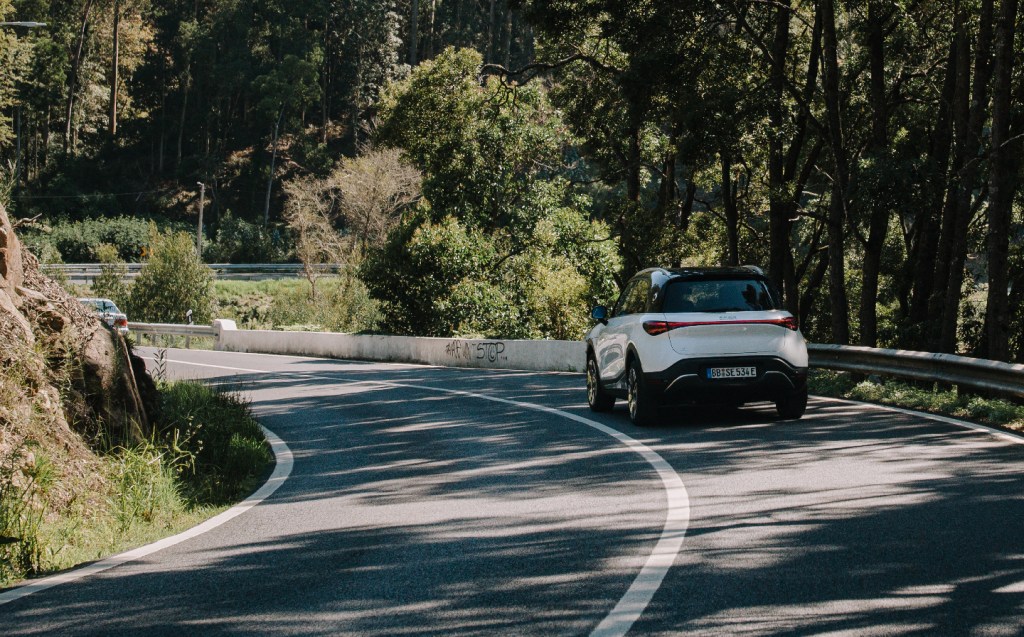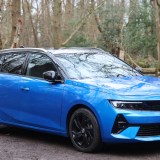Smart #1 2023 review: Electric car brand reborn with compact SUV, Chinese investment .... and a fox
Has Smart outfoxed its rivals?
The Smart car, later known as the Smart Fortwo, was a pretty clever solution for urban drivers – two seats, a tiny footprint to make parking a doddle (some even tried it nose-to-kerb, such was the short length of the car), and, because of its tiny size and weight, ultra-low fuel consumption. It had faults, chief among them a dreadfully ponderous automatic transmission, but it also had its fans.
The Fortwo was developed over time, and other models were added to the line-up, such as the Roadster (great fun, particularly in hot Brabus form, but with the same ponderous gearbox) and four-seat Forfour (cute and more practical).
The Smart Fortwo was also offered in pure-electric form fairly early in the new EV era. Many would say that began with the Tesla Roadster, in 2008, but the “Fortwo ED” preceded that by a year (though initially only on lease deals). It was to some (me) the best variant of the plucky two-seater, as it was smoother due to being rid of the hopeless gearbox, nippier thanks to the torque of the electric motor, and quieter for the same reason.
Having been ahead of the game, Smart stuck with electric power options and now proudly points out that it was the first car maker to offer its entire range only with electric power, after removing combustion engines from its line-up in 2020.
This new Smart #1 (pronounced “hashtag one”, because the brand’s German marketing agencies are blind to naffness, clearly) isn’t a continuation of that trajectory but rather a completely fresh start for the brand, as the first car to be launched on all-new underpinnings from Chinese behemoth Geely, which owns the Volvo, Polestar and Lotus brands, and bought a 50% share in Smart from Mercedes-Benz in 2019.

The platform will form the basis of future electric Volvo models, in fact, and Smart says the #1, a pure-electric compact SUV (for that is what people want to buy these days), is the nucleus for all things to come from the revitalised brand.
It had better be good, then.
Smart #1 exterior design and rivals
If you’re wondering why the new #1 isn’t a tiny little two-door city car, in reinventing itself Smart is quite frank about wanting to build a model that people are actually likely to buy in decent numbers, rather than playing around in niche territory as it has done in the past.
Smart was always about maximising space, and arguably that philosophy continues here – it’s just that this time the company is targeting the most popular vehicle class. You can’t really argue with that strategy.
As a result you get five doors, five seats and Tardis-like room in the cabin thanks to the wheel-in-each-corner layout (more below).
The structure and drivetrain come from Geely in China but Smart #1’s body was designed by one of Mercedes’ design team in Germany, and while it apes the curvy vacuum-formed look of the older Smarts in some ways, the body marks a new chapter for the brand under an ethos the German marketers call “sensual product”. That gives you an idea of the sort of customer the company is chasing.

Key features include flush door handles, frameless doors and the “floating roof”, which barring the swooping D-pillar behind the rear windows gives it a sort of Mini Countryman look (Mini has what is called a three-layer cake design philosophy: roof on windows on everything else. Also notice the full-width lightbar that splits into a V shape at each corner, which is unusual in that it’s echoed front and rear.
The Brabus version isn’t radically different but the sporty a body kit includes bonnet vents, a new front spoiler with channels to clean up airflow around the front wheels, a more prominent rear spoiler and side sills. The wheels are the same size but the Brabus gets bespoke alloys, and red accents feature both inside and outside the car.

In terms of true rivals, an electric Mini crossover will take on the Smart #1 next year but until then, those in the market for an electric crossover around the same size and for similar money (scroll down for estimated prices) will also want to look at the VW ID.3, Kia Niro EV, Peugeot e-2008 or Hyundai Kona Electric.
If you want the performance of the dual-motor Brabus then you also need to check out the Genesis GV60 Sport and Electrified GV70 Sport, Volvo C40 Recharge Twin Motor or the Tesla Model Y Dual Motor, though all are pricier.
Interior, technology and practicality
There are definite Mercedes vibes in the interior of this car, from the way that the central console has soft-opening flip-up lids to some of the curvature, though the oval shapes on the air vents, in the door handles and in the dashboard itself are a new Smart signature design (Mercedes favours circular vents).

The steering wheel features a circular centre part that is very reminiscent of Smarts of old but everything else is new, minimalist and tasteful, with a pleasing mix of modern materials. It’s also really nicely screwed together.
The rectangular driver’s display behind the wheel is not huge but it’s high definition and contains a lot of information, including a graphic showing the cars around you, Tesla-style. The head-up display, which comes as standard on the Brabus model, is useful.
The large central touchscreen is the biggest talking point, partly because Android Auto and Apple Carplay aren’t available at all (never say never, we were told, though their omission is likely to put off plenty of customers) but mainly because of the fox avatar AI assistant, which appears as an animated graphic in the bottom right corner.
Most of the time the fox plays with a beach ball or rolls over, but by saying “Hello, Smart”, it sits up and pays attention, and its little fox mouth opens and closes as the AI system responds.

Yes, the fox is a gimmick. 100%. But it’s the sort of thing that some people will love, I think, and I’ll put money on some customers going for the Smart #1 over rivals mainly because of the fox. People will name their fox; people will love their fox. And when they come to upgrade their car, I’ll also wager the same people will not want to part with their fox, which would increase brand loyalty.
Smart wouldn’t go into details but they let slip on the launch in Portugal that there might be over-the-air updates to allow customers to customise their fox in the future. So we might expect things like a Christmassy Fox in winter, and maybe even animals other than foxes in the future.
As for the touchscreen layout and the way the system actually works, there were some old-school motoring scribes on the launch who found it all rather confusing. One even reported that theirs went black and had to be restarted.
Without doubt, the home screen is really busy, but I found that beyond that it wasn’t a chore to find my way around and when you’re using the navigation system, it’s clear and distraction-free. And in my own experience there were no tech issues and zero lag, thanks to superfast Qualcomm processors (their first use in a car, we were told).
From the central screen, you can also run the automatic Park Assist system, which will recognise individual spaces that you can select with a touch.
There are other useful apps available for download, including Spotify and various games (useful when charging up with kids in the car) and Smart will be adding to the library over time.
One thing to expect is subscription features for the car, which you’ll have to pay for to activate, such as certain advanced driver aids and the likes of heated seats. While many see this as profiteering by the car companies (Smart’s not alone in introducing this – you can even buy sat nav via a VW Polo touchscreen now), but the logic for the manufacturers is that it’s more economical to design and build one car fitted with all the bells and whistles than to produce it with a variety of different seats, sensors and hardware types.
Fortunately I found the seats in the #1 very comfortable and supportive, particularly in Brabus trim with sporty Alcantara material around the steering wheel and on the backs of the seats. Entry level Pro+ versions have a faux leather effect, while premium get leather throughout. The launch editions have white leather.
Regardless of what trim you go for, thanks to the wheel-in-each-corner layout the interior is incredibly roomy for a car of this size. There are lots of cubbyholes and a huge amount of space. Headroom is more than ample in the front and rear (even for someone of 6ft 5in like me), and there’s plenty of legroom in the back.

The Brabus features a wireless charging pad, a couple of USB C sockets and even a 12-volt socket, which have been removed from some rivals’ cars. Behind that there cupholders and a space for your phone, while underneath the centre console is a space for bags. There’s even the option to have a coolbox between the front seats.
The boot is not particularly large, at 323 litres (there’s an additional tiny 15-litre compartment under the bonnet). And it’s not an especially big rear hatch, either. But there is space underneath the floor and getting things in and out is quite simple. The tailgate is powered, too, which is something the Smart has over some rivals (it’s not on our Ford Mustang Mach-E extended test car, for example).

The technology can be nannying; the car will tell you what the speed limit is and then tell you that you are exceeding the speed limit even if you go over by one mile per hour, which is fairly irritating if you’re just keeping up with the flow of traffic, but overall, it’s a really nicely thought out, forward-thinking interior, with plenty of space and visibility all round.
Performance, range and recharging times
We got behind the wheel of both versions – rear-wheel drive (in Premium trim) and the hot dual-motor Brabus version. Both are quick compared with petrol equivalent but there is a big and clear difference between the two.
With the standard car you get an electric motor pushing 268bhp through the rear wheels, which results in a 0-62mph time of 6.7sec. That’s just two tenths of a second slower than a Ford Fiesta ST, amazingly, so it feels brisk.

The Brabus is a very different animal, with 422bhp in total thanks to an extra 155bhp motor working on the front wheels. The 0 to 60mph sprint time drops to just in 3.9 seconds, which makes it as quick as a BMW M3 – really very rapid indeed. Apparently “the beast” is what they call it internally, though that doesn’t quite sit right in my head despite the slightly more aggressive body kit and thumping performance.
Perhaps more important to owners will be how far they can travel per charge and how long they have to sit on rapid chargers during long trips, and in these areas the Smart #1 performs well, too.
All versions, from entry-level Pro+ to range-topping Brabus, get the same 66kWh battery though a different (read cheaper) processor in the Pro+ means it only manages 260 miles per charge compared with the Premium and Launch Editions’ range of 273 miles. That puts them in the same ballpark as the 267-mile rear-wheel-drive Tesla Model Y, which is impressive given we reckon the Smart will cost at least £10,000 less.

The Brabus, as you might expect from a high performance model with an extra propulsion motor, is the least impressive in terms of range: 248 miles between charges. But while it again is expected to undercut the equivalent dual motor Teslas by a similar margin, those two models offer at least 319 miles per charge.
In our experience, though, charging speed counts for more than how far you can go per charge and all versions of the Smart #1 come with DC rapid charging at up to 150kW, which means a 10-80% charge in less than 30 minutes.
Ride and handling
There’s more good news when it comes to the way the car rolls along the asphalt. The Smart #1 glides along beautifully, with a supple yet composed ride – close to best in class, and clearly a huge improvement from the pre-production models in which a few journalists received passenger rides earlier this year.

But despite bumps in the road being shrugged off nicely, the Smart #1 isn’t too soft — through a number of twisty corners on our test drive in Portugal the car proved pretty entertaining. With the Brabus you can put your foot down mid-corner and spin the front wheels, and the rear-wheel drive model was described by another journalist as “squirrely” – in a good way, I later discovered when I got behind the wheel.
Both the Brabus and the standard car have passive suspension, so there’s no active damping or electronic trickery — just decently-engineered springs and dampers.
What’s more, noise in the cabin is low, and refinement is excellent.
Trim levels, prices and on-sale date
The first cars to arrive in Europe will be the Launch Edition, though us Brits will need to wait until June next year for our right-hand drive versions, and we’ll only be allocated 100 of those cars. The good news is that the Brabus versions should be delivered around the same time.
Pre-orders will be available in the UK from January 2023, and we won’t be getting UK prices until later this year, but the Euro prices give us a good idea of what we’re looking at: the Pro+ starts at €39,990 so expect entry level models here from around £35,000. That’s not cheap but very competitive.
Our friends in Europe will be paying €43,490 for the Premium model, €44,790 for the Launch Edition and €47,490 for the dual motor Brabus.
All cars get a panoramic roof, powered and heated front seats and mirrors, two-zone climate control, adaptive cruise control, lane-keep assist, front and rear parking sensors with 360-degree cameras, powered boot hatch and the 12.8in HD touchscreen, so despite not getting Android Auto and Apple Carplay, they’re all very well equipped.
Premium, Launch edition and Brabus versions add a Beats soundsystem, wireless phone charging, head-up display and matrix LED headlights.
Verdict: 2023 Smart #1 review

The cutesy looks of the Smart #1 won’t appeal to everyone, and British owners will wince when telling people they own a “Hashtag One”; it’s a properly stupid name that we now have to add to this list.
But those things aside we were really impressed with the performance, handling and ride quality, equipment levels and charging speeds. The range is pretty good, too, as is the price (comparatively).
And we’ll tell you a secret: we like the fox avatar.
Related articles
- After reading Will Dron’s review of the Smart #1, you might be interested to see his review of the Genesis GV60
- A new survey has found that three fifths of drivers put off electric cars by rising home energy prices
- Click here to see all the car makers’ electric vehicle plans
Latest articles
- Aston Martin Valkyrie AMR-LMH hypercar hits track ahead of 2025 Le Mans challenge
- Porsche has begun testing the electric Cayenne
- Cupra Leon 272 eHybrid 2024 review: Bigger battery, better tech … but is it a Cupra?
- Porsche 911 GTS 2024 review: Hybrid heresy or more Stuttgart genius?
- Extended test: 2023 Vauxhall Astra Sports Tourer GS PHEV
- Ford Capri revival has faced a lot of flak… but are buyers put off? Here’s what visitors to the Festival of Speed had to say
- F1 2024 calendar and race reports: What time the next grand prix starts and what happened in the previous rounds
- ‘No timeframe’ for how long Volvo’s returning estate cars will be on sale in UK
- Kia Picanto 2024 review: Updates add spice to cute Korean city car
























